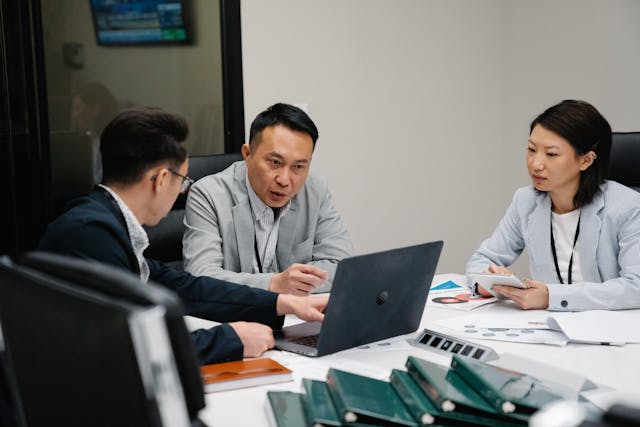Introduction
The strength of any development initiative often lies not only in policy or funding, but in the ability to energize and engage communities meaningfully. Community Animation Techniques refer to the creative and structured processes used to mobilize people, nurture collective action, and sustain engagement around shared goals. Community animators—whether health workers, facilitators, youth leaders, or NGO staff—play a catalytic role in unlocking participation, enabling dialogue, and translating passive community presence into active community power.
Community animation is not about simply organizing meetings or disseminating information—it’s about stimulating people’s interest, listening deeply, building trust, and encouraging individuals to take ownership of development challenges and opportunities. This course is designed to provide practitioners with the tools, behaviors, and facilitation skills necessary to animate vibrant, empowered communities capable of sustaining change.
Because when people feel heard, valued, and included, they are far more likely to participate actively—and that participation is what transforms projects into movements.

Who’s This Course For
This course is designed for professionals and leaders working in community development, health, education, humanitarian response, or any sector that relies on community participation for success.
This course is ideal for:
- Community development practitioners and field officers
- Health promoters and community health workers
- NGO program staff and project facilitators
- Social workers and youth outreach coordinators
- Local government officers involved in citizen engagement
- Trainers, educators, and community-based researchers
- Peacebuilders and humanitarian responders
- Volunteers and animators leading community mobilization
Whether you are working in slums, rural villages, refugee camps, or peri-urban neighborhoods, Community Animation Techniques will give you the practical tools and mindset to engage communities respectfully, dynamically, and effectively.
Latest Trends in Community Animation Techniques
As community dynamics shift and development approaches evolve, the practice of community animation is adapting in several impactful ways:
From Mobilization to Co-Creation
Traditionally, animation focused on mobilizing communities for pre-defined projects. Today, there’s a shift toward co-creation, where community members are not just participants but co-designers of programs. Animation techniques now focus more on facilitation than persuasion.
Digital Community Animation
In the digital age, community animation increasingly involves the use of online tools—such as WhatsApp groups, Facebook communities, mobile apps, and webinars—to engage members across geography and time. Virtual animation requires new skills in digital communication, moderation, and hybrid engagement.
Creative and Arts-Based Approaches
Community theater, mural painting, song creation, and participatory video are being used as animation tools to express community concerns, promote dialogue, and build collective identity. These methods are especially effective in low-literacy or multilingual settings.
Trauma-Informed and Inclusive Animation
There is growing awareness of the need for trauma-informed approaches, particularly in conflict-affected or displaced communities. Animation now emphasizes safe spaces, empathetic listening, and conflict sensitivity, ensuring that all community members can engage without fear or exclusion.
Animation for Collective Impact
Community animation is increasingly aligned with broader impact frameworks such as collective impact, community-led monitoring, and participatory governance. Animators are being trained to bridge stakeholders, facilitate joint problem-solving, and sustain collaboration over time.
Learning Objectives and Outcome for the Course Sponsor
The aim of this course is to build participants’ competence in the theory and practice of community animation so they can initiate, support, and sustain collective action in the communities they serve.
Key Learning Objectives
- Understand the Foundations of Community Animation
- Define community animation and distinguish it from other forms of facilitation or mobilization
- Explore the values of participation, empowerment, and respect that underpin effective animation
- Identify the Role and Qualities of a Community Animator
- Examine the roles of an animator: catalyst, listener, connector, motivator, and mediator
- Reflect on personal attitudes, behaviors, and communication styles essential for animating trust
- Apply Participatory Tools to Engage Communities
- Learn a range of animation tools such as storytelling circles, role play, participatory mapping, forum theatre, and group energizers
- Match appropriate tools to different community contexts and learning styles
- Facilitate Inclusive and Respectful Dialogue
- Learn how to lead group discussions that are inclusive, culturally sensitive, and gender-aware
- Address power imbalances and draw out voices that are often excluded, including youth, women, and persons with disabilities
- Plan and Lead Community Sessions Effectively
- Structure meetings and workshops using the animation cycle: prepare → engage → facilitate → reflect → follow up
- Use dynamic session planning and real-time adjustments to keep communities engaged and motivated
- Apply Conflict-Sensitive and Trauma-Informed Animation Techniques
- Understand the basics of conflict sensitivity and emotional safety
- Use techniques that promote healing, trust-building, and conflict resolution in sensitive environments
- Leverage Technology for Community Animation
- Explore online facilitation tools and platforms for virtual engagement
- Learn how to balance offline and online animation in hybrid or digital-first contexts
- Document and Reflect on Community Learning
- Practice participatory documentation methods (e.g., visual diaries, community storyboards, reflective journaling)
- Use reflection techniques to foster continuous learning and accountability among animators and community members
You may also be interested in other courses in the Humanitarian and International Development
Organizational Outcomes
- When applied effectively, Community Animation Techniques contribute to stronger, more resilient institutions and programs. Organizations that invest in this course can expect:
- Deeper and more sustainable community engagement
- Greater program success due to higher ownership and motivation among community members
- Stronger field teams with communication and facilitation competencies
- Reduced conflict and better inclusion, especially in complex environments
- Scalable methods for participation that can be adapted across sectors and regions
- Improved community feedback mechanisms, enabling responsive, citizen-driven programming

Course Methodology
This is not a lecture-heavy course—it is designed to be as interactive, experiential, and participatory as the techniques it teaches. Participants will:

Core training components include:
- Practice core animation tools in real-time
- Engage in peer learning and feedback
- Simulate community sessions using real-life scenarios
- Reflect through journaling and creative expression
- Build a practical action plan tailored to their own context
Training activities include:
- Role-playing as an animator in challenging scenarios
- Designing and facilitating mock community dialogues
- Reviewing video footage of real-life community animation examples
- Participating in arts-based engagement exercises
- Co-developing a field-ready community animation toolkit
Participants will also receive:
- A Community Animation Handbook with techniques, templates, and toolkits
- Access to case studies from across Africa, Asia, Latin America, and the Middle East
- Planning tools for inclusive and accessible engagement sessions
- Templates for reflective journaling, session planning, and community feedback loops
The course is available as a 5-day in-person workshop, a 4-week online blended program, or a customized training for organizations working at the grassroots level.
Why It Matters in Today’s World
Top-down approaches to development are no longer sufficient—people need to be active agents, not passive recipients, of change. Yet genuine participation is not automatic; it must be facilitated, nurtured, and animated.
Community Animation Techniques offer a structured yet flexible approach to engaging people with dignity and purpose. Whether supporting disaster response, launching a health initiative, building peace, or starting a livelihood program, the ability to animate people—to spark dialogue, co-create vision, and motivate collective action—is foundational to success.
In a world where polarization, exclusion, and disengagement are rising, community animation becomes more than a skillset—it becomes a form of service leadership and a tool for social transformation.









